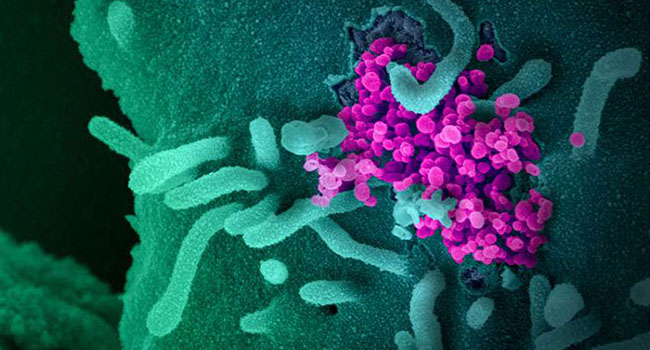
It is likely that eventually, CoViD-19 will become endemic (commonly recurring in the community), and most of us will get infected, says Justin Lessler, an associate professor of Epidemiology at the Johns Hopkins Bloomberg School of Public Health in the United States.
“But one question is super important: How long will it take for that to happen?,” he told the university website Global Health Now.
“If it happens in a few months, every hospital will be overwhelmed and people will not be treated for coronavirus or other diseases. If it happens that fast, it will be an unprecedented disaster.
“However, if we do our best in terms of prevention by practicing social distancing, reducing travel, not going to work when we’re sick, we could slow spread of the disease. If the same 60-70% infection of the global population is spread over 3 years, then hospitals don’t get overwhelmed, people can get treated, and we have time to develop a vaccine—it’s a completely different story.
“The difference between it happening fast or slow is potentially the difference between a 1918 flu level event and a bad flu season level event. We have control over that,” he said.
Other experts answer questions about the virus at CoViD-19 Expert Reality Check to help improve understanding of an emerging outbreak’s complex dynamics.
Southern Hemisphere
There is already evidence of widening transmission of SARS-CoV-2 (the name of the virus) across the Southern Hemisphere, though the virus is currently taking its primary toll in the North. “It is likely that 60-65% of Northern Hemisphere populations will be infected with the virus by July or August,” says Laurie Garrett, a former senior fellow for global health at the Council on Foreign Relations and a Pulitzer Prize winning science writer.
“As the epidemics seem to diminish later in the summer, action will shift to the South, with CoViD-19 (the name of the disease) sweeping across Latin America, Africa and the South Pacific, similarly infecting upwards of 60% of populations. And then by December, it will make a slow return to the Northern Hemisphere, creating a North/South cycle that will persist for years,” Laurie said.
“Adding additional fuel to the South’s fire will be high HIV infection rates, with more than a third of HIV-infected Africans, in particular, unaware of their status and therefore not on suppressive medication, and immunocompromised.”
Symptoms
The symptoms of CoViD-19—including fever, cough, and difficulty breathing—are similar to those of other cold and flu viruses. Close contact with someone who traveled to infected areas or with someone who has been diagnosed with CoViD-19 are some of the considerations in testing, says Preeti N. Malani, MD, MSJ, the chief health officer and a professor of Medicine in the Division of Infectious Diseases at the University of Michigan.
Immunity
Although it’s possible we could have pre-existing immunity if we were previously infected with “common cold” coronaviruses, there is no evidence that this is protective in people exposed to SARS-CoV-2 (the virus that causes CoViD-19)... but there is the possibility of protective cross-reactive immunity from closely related coronaviruses, says Angela Rasmussen, PhD, a virologist at the Center for Infection and Immunity at the Columbia Mailman School of Public Health in the US.
We are learning more about the virus every day. “On the continuum of the common cold to SARS, it’s now clear that the novel coronavirus is more contagious than SARS, but less deadly. We don’t yet know how much more contagious, or how much less deadly. The number of confirmed infections with nCoV has already far outpaced the total number of suspected SARS cases,” says Tom Frieden, President and CEO of Resolve to Save Lives in New York.
“This pandemic will last until most people are immune, whether through vaccination or from having gotten the illness [CoViD-19] and recovered,” says Eric Toner, MD a senior scholar at the Johns Hopkins Center for Health Security. “I think there will be waves of the epidemic. Each wave will last a couple of months—from valley to peak to valley. As we begin to relax social distancing efforts—which we will have to do because society can’t stay like this—the disease will start to come back. The hope is that it will return more slowly because there are fewer susceptible hosts.”
Dashboard of emerging cases
The John Hopkins University is tracking the global spread and outcomes of CoViD-19, with live updates on its dashboard Coronavirus COVID-19 Global Cases by the Center for Systems Science and Engineering (CSSE) a at Johns Hopkins University (JHU)



